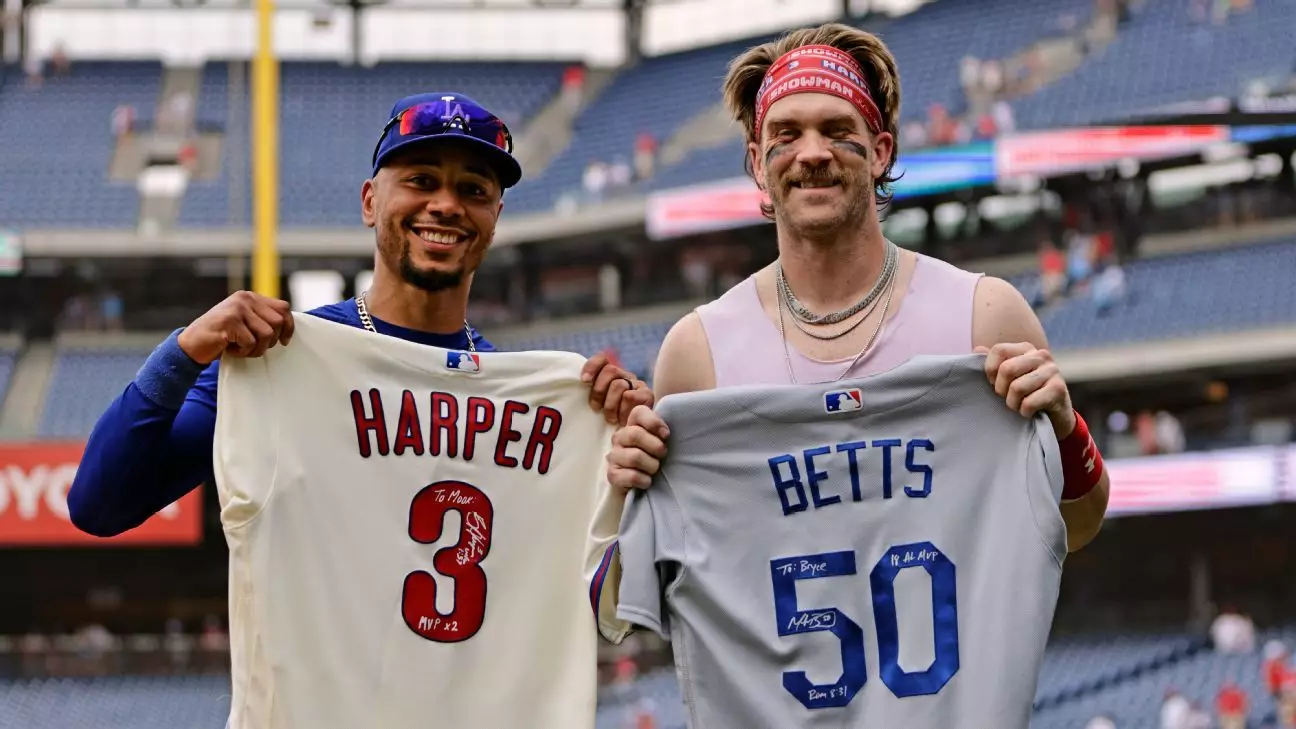In the ever-evolving world of Major League Baseball (MLB), financial dynamics take center stage. With a staggering average salary surpassing $5 million on Opening Day this year, it’s clear that whereas the game has historically been scrutinized for economic disparities, the current reality paints a more nuanced picture. Teams are increasingly willing to invest in top-tier talent, as illustrated by the Los Angeles Dodgers and New York Mets’ unparalleled payroll figures. The Dodgers, with a nearing $320 million payroll, epitomize how wealth can shape competitive landscapes, injecting excitement and intensity into America’s pastime.
The contrasting reactions to these immense payroll decisions have highlighted a rift in the baseball community. Some, like superstar Bryce Harper, champion the aggressive spending strategies of teams like the Dodgers, viewing them as a mark of ambition rather than a reason to complain. Harper’s candid remarks about his admiration for the Dodgers encapsulate a belief that success should inspire emulation rather than envy. His perspective challenges the prevailing narrative that financial investments in star players undermine fairness in the game.
The Consequence of Wealth: Cheering or Complaining?
It’s becoming increasingly evident that teams with significant financial muscle are rewriting the rules of engagement in baseball. Complaints about payroll inequities reflect a broader anxiety permeating the sport. Yet, as Harper argues, whiners are often the ones left behind—the losers who can’t keep pace with the financial arms race. This assertion prompts us to question: should teams aspiring to compete be directing their energy toward finding innovative solutions rather than lamenting their financial limitations?
The Dodgers’ success—bolstered by hefty signings like Shohei Ohtani—is not born from mere luck but rather from a deliberate strategy that champions opportunism and foresight. Ohtani’s impressive contract, although complex with deferred payments, exemplifies the lengths teams might go to secure talent that can fundamentally change the trajectory of a franchise. If teams embrace the financial realities and strategize effectively, they can cultivate the competitive spirit the league thrives on rather than seeking solace in the status quo.
Deferred Payments: A New Era of Strategy
The concept of deferred payments has surfaced as a revelation in player contracts. With Ohtani’s $70 million salary adjusted for present-day value, it’s fascinating to witness how financial acumen can be employed to accommodate superstar athletes while maintaining payroll flexibility. The idea of deferring payments may not only alleviate immediate financial burdens but also provide teams the latitude to solidify their rosters year after year. As teams adopt such frameworks, there might be room for innovation in how success is measured—transitioning from a sole focus on wins to a holistic evaluation of financial and strategic triumphs.
Come playoff time, the numbers will speak for themselves; massive payrolls often correlate to postseason success. But at a time when the pressure intensifies to achieve a balance between competitiveness and financial prudence, the debate surrounding a salary cap looms. Should MLB introduce mechanisms to restrain the spending of particular franchises? The answer is complex and merits careful consideration. While a salary cap may ostensibly level the playing field, it could also decrease the financial and strategic ambition that has reinvigorated the league.
Life in Los Angeles: The Ultimate Magnet
As the allure of Los Angeles beckons players to its lucrative embrace, the city’s vibrant concurrent culture only amplifies its charm. It’s not just about the money; it’s about the experience. Harper eloquently noted that Los Angeles is at the center of everything—from sports and food to nightlife—making it an irresistible destination for top talent. This cultural richness plays into the recruitment strategy, as players are drawn not only to the financial rewards but also to the lifestyle and brand-building opportunities that come with being a Dodger.
The confluence of wealth, ambition, and lifestyle continues to mold MLB’s landscape, often leading to thrilling matchups that evoke passion from fans across the country. The promise of the sport, both on and off the field, relies heavily on maintaining this fine equilibrium. Teams that embrace strategic innovation and prioritize top talent will undoubtedly set the pace for a transformative era in professional baseball, and that’s an exhilarating prospect for fans and players alike.

